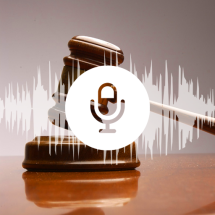Intoxilyzer 9000
The State of Texas is currently on the verge of replacing the Intoxilyzer 5000 EN and transitioning to the Intoxilyzer 9000 for breath alcohol testing. According to a representative of the manufacturer of the device, it is meant to work by infrared light absorption of alcohol detected in a person’s breathing. The device works in a way that it subtracts the amount of light absorbed from a person’s breath sample, and compares the amount with the amount of light initially introduced by the device into its testing chamber. After this whole process, it prints the difference as a test result. Summarily, the Intoxilyzer 9000 works by looking for the presence (if any), and amount of alcohol in a breath sample. It uses infrared light technology to both identify and quantify ethyl alcohol in a breath sample. The trick here is that ethyl alcohol uniquely absorbs infrared light. As the pattern on the device is used to identify alcohol, it also shows the amount of absorption used to quantify alcohol in a breath sample. The final result from the Intoxilyzer 9000 is printed as an analytical result in grams of alcohol and 210 liters of breath as stated by Texas law.
INHERENT PROBLEMS ASSOCIATED WITH THE INTOXILYZER 9000
Research and studies have shown that the main difference between the Intoxilyzer 5000 and the Intoxilyzer 9000 is the presence of what is called ethanol “fingerprint” in the Intoxilyzer 9000 version. In other words, the machine itself is more suspect to the interference of non-specific alcohol content. In situations where the Intoxilyzer 5000 measured the carbon-hydrogen (C-H) bond vibrations in the 3-micron region of ethanol’s molecular fingerprint, the Intoxilyzer 9000 measures the carbon-oxygen (C-O) vibration in the 8– 9-micron region. The flaw in this design is that other molecules are commonly found in the human body with this same C-O stretching. Specifically, other organic particles can potentially contaminate breathe test samples. Some of these organic substances include certain ethers, that are similar alcohol on a molecular level because each contains both the methyl group and carbon-oxygen bonds in their molecular structures,
The Department of Public Safety in Texas (DPS) has taken the stance of refusing to allow for the review of the histograms for the Intoxilyzer 9000. he Intoxilyzer 9000 automatically has the capability and does actually print off a physical copy of the histogram, which can render relevant information that should show or demonstrate the person’s breath flow, breath volume, and the length and duration of the blow into the machine. The histogram is important for a variety of reasons because it produces a graphical representation of data that is relevant to determine crucial and vital information, such as whether there was sufficient “slope” for the sample (the two results given have to be within a certain range of each sample given). It may show the presence of interferences and/or can help determine if a test was contaminated by mouth alcohol. Other states, such as Georgia and Colorado, provide a variation of the histogram, which can help to ascertain pertinent and relevant information to help with proving the validity of a result given. Why has Texas taken the position to do otherwise if the machine was not subject to error and false-positive results?
DPS in Texas refused to produce any variation of a version of a histogram of a breath test result, even though it would come at no imposition to them if they chose to do so because it is readily available. This is confusing and leads to further speculation of how imprecise the Intoxilyzer 9000 is (perhaps even more so than the 5000) because every breath test result given produces a print out of the histogram, but for some reason Texas has chosen as a policy to not store or save the histogram, nor any variation of the data it interprets. DPS has clearly demonstrated, that at the very least it does not believe the citizens of Texas deserve the same protection afforded to those who live in other states, and/or if not – it is an obvious indicator that they do not want to produce the histogram results because of how often it would be questioned and attacked later in court by DWI Defense Attorneys.
Another problem exists based on how there are less “filter wheels” in the Intoxilyzer 9000 than there were in the Intoxilyzer 5000. While the original Intoxilyzer 5000 uses a tungsten filament light source that provided continuous IR and visible radiation, theIntoxilyzer 9000 on the other hand, uses a grey body infrared light that pulses the energy through the sample chamber to a stationary detector that contains only four filters, each of them having a specific wavelength of IR radiation with lack of a zero set. Where the Intoxilyzer 5000 had a blank or a zero filter in the wheel, the Intoxilyzer 9000 does not have a detector for a real zero. Instead, the machine assumes or is programmed to read zero if the filters do not detect other samples besides alcohol.
INTOXILYZER 9000 DELAYED
Although DPS in Texas had a very prolonged and lengthy delay before the implementation of Intoxilyzer 9000, as it just now seems to be in more full use, but one has to question the reason for why the length of time for the delay when finally putting in place the testing program for the Intoxilyzer 9000, which was originally scheduled in Texas for use as far back as the summer of 2015. For years the proposition lingered that at some point it would be put into use replacing the old machine that was first created and put into use in the early 1980s. Much is already known from information gathered from other states have had it in use for a longer period of time, and as such, based on this much is already known from their use which indicates and illustrates the many deficiencies of the Intoxilyzer 9000. An experienced DWI lawyer can educate the court and a jury about the deficiencies of the machine’s accuracy and reliability based on what is already known – but I suspect that as time goes by, other information will come to light which demonstrates it’s flawed nature.
In a similar fashion, DPS in Texas has chosen not to partake in specific upgrades in for the Intoxilyzer 9000 which may actually render it a better functioning machine. Some of these added functionalities include the production or the capacity to save at least a version of the histogram produced with every breath test result given by an Intoxilyzer 9000 machine. As stated previously, such information is needed and would aid in determining the functionality of the machine ensuring the results given by each machine do not show a pattern of not working or with some other possible deficiency.
CONTACT OUR OFFICE NOW
Attorney Carl David Ceder and his office and team of professionals take an immense amount of pride in their work. Should you decide you would like to inquire about anything further, you can e-mail Carl directly at [email protected] and/or at [email protected], and/or call the office 24 hours a day at 460.2000.DWI(394) and/or 214.702.CARL(2275). Thank you for your time, and please contact the office with any questions and/or concerns you may have going forward or about the overall process. Phones should be answered 24 hours a day/7 days a week.





















